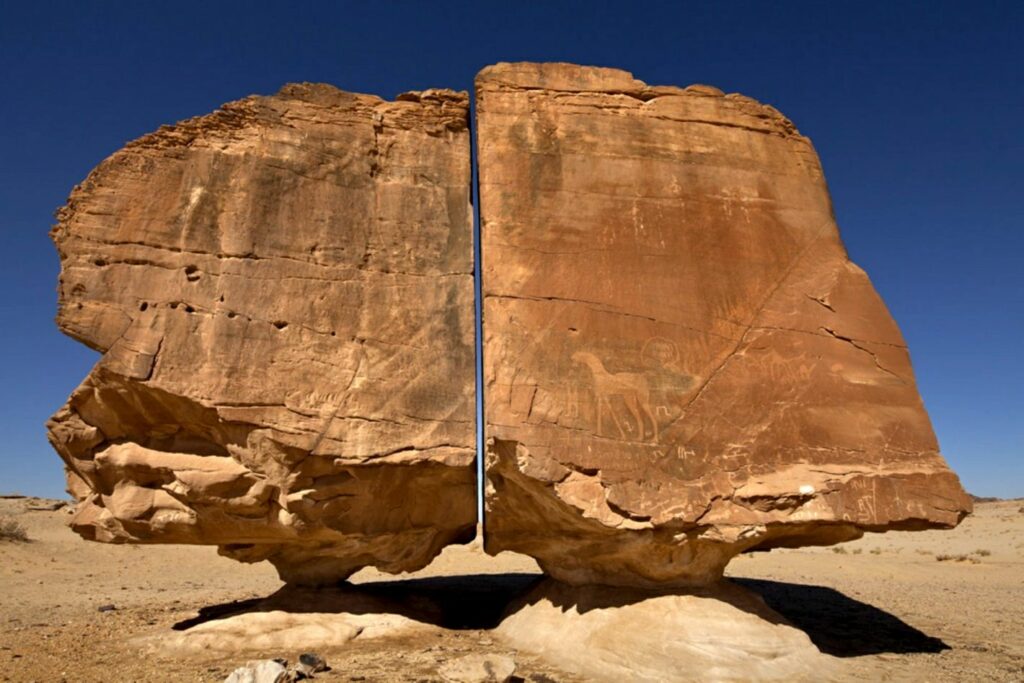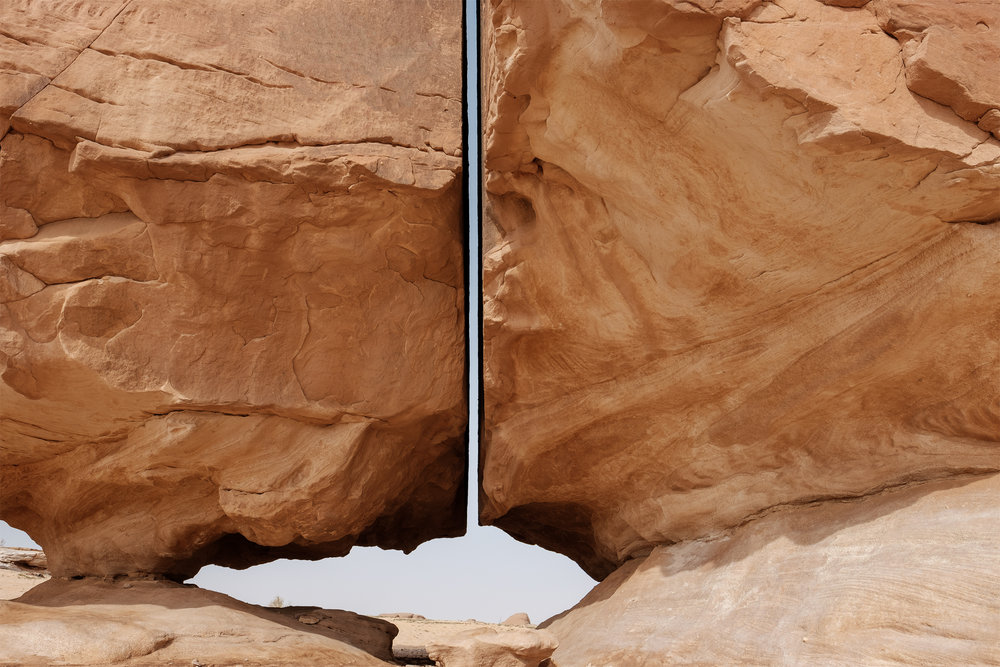The massive rock, located in Saudi Arabia, is divided in half with extreme precision and has curious symbols depicted on its surface, in addition, the two divided stones managed to remain standing, perfectly balanced, for centuries. This incredible ancient stone structure attracts thousands of tourists every year, who come to Al-Naslaa to observe its perfection and balance, and put forth several theories trying to explain its origin.

In 2010, the Saudi Commission for Tourism and National Heritage announced the discovery of another rock near Tayma, with a hieroglyphic inscription of the pharaoh Ramses III. Based on this discovery, the researchers hypothesized that Tayma could have been part of an important land route between the coast of the Red Sea and the Nile Valley.

According to reports, the oldest mention of the oasis city appears as “Tiamat”, in Assyrian inscriptions dating from the 8th century BC, when the oasis turned into a prosperous city, rich in water wells and beautiful buildings.
Archaeologists have also discovered cuneiform inscriptions, possibly dating from the 6th century BC in the oasis city. Interestingly at this time, Babylonian king Nabonidus retired to Tayma for worship and search for prophecies, entrusting the reign of Babylon to his son, Belshazzar.
The region is also rich in history, being mentioned several times in the Old Testament, under the biblical name of Tema, one of the sons of Ishmael.
























